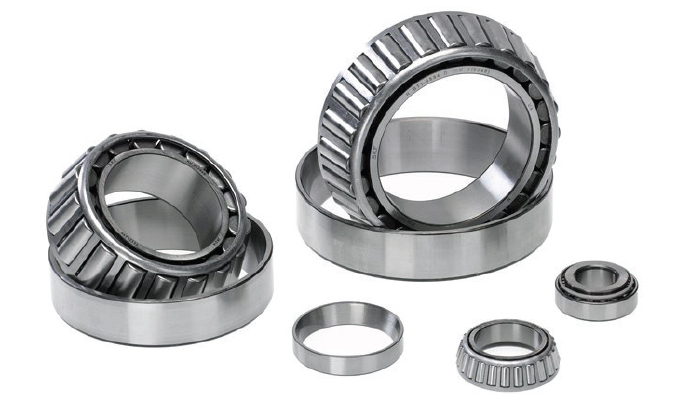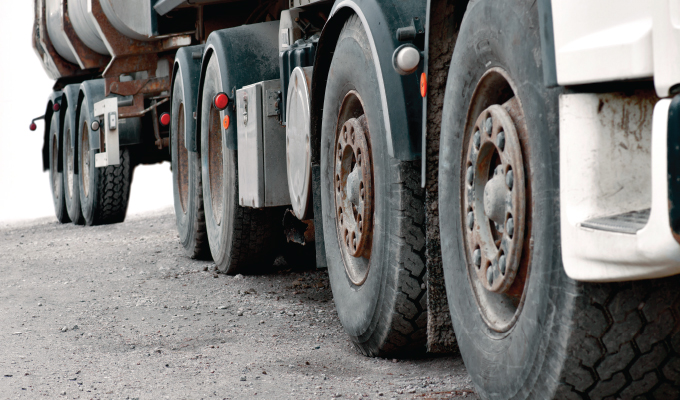By David Massanga
As e-commerce continues to soar amid the aftermath of the global health pandemic, more and more commercial fleets are transporting goods across North America with truck drivers logging billions of miles annually. In addition to the countless hours spent traveling to and from a destination point, these heavy-duty work trucks often face grueling weather conditions and rough terrain that, over time, can impact the performance of the wheel end system. Thankfully, advances in the components that make up a wheel end system offer commercial fleet managers safer, efficient, and much more dependable solutions for an enhanced driving experience.
WHEEL END SYSTEM 101
A typical wheel end system consists of a seal, an inboard and outboard tapered bearing, and a hubcap. Additional components include a spindle nut and wheel nuts. Some wheel end systems may also contain a spacer meant to provide preset torquing. Each component plays an important role in protecting the wheel end as well as the operator.
Seals
The seal may be one of the more critical components in the system, as it is meant to keep the oil or grease in the hub unit and contaminants from getting into the hub. This keeps the bearings properly lubricated and protects them from premature failure, saving unnecessary downtime and out-of-pocket replacement costs.
One company, SKF Vehicle Aftermarket, offers a variety of oil and grease wheel seals designed to provide positive leak-proof sealing and contamination exclusion. SKF products feature a rubber compound that performs reliably in extreme operating conditions, superior fluid and temperature compatibility, and better pumping to push excess fluid away from the sealing lip and shaft interface.
Bearings and Pre-Assembled Hub Units
The wheel bearings typically consist of a cup, cage, rollers, and an inner race. They are intended to provide operational reliability under heavy loads, radial and thrust loads, and misaligned road conditions.
Most vehicles will need a full wheel bearing replacement between 80,000 and 118,000 miles. For maximum safety and reliability, it’s recommended that operators inspect their wheel bearings during any brake replacement work, regardless of the age of the vehicle. Early warning signs of worn bearings include any friction noise on wheel rotation or unusual slowness in the turning action of the suspended wheel assembly.
SKF’s tapered roller bearings accommodate axial and radial loads and are made from high-quality steel for longer service intervals. The company also offers pre-assembled unitized hub units that are sealed and lubricated for life.
Hubcaps
The hubcap keeps the oil or grease in the wheel hub, maintaining sufficient lubricant to the bearings. Some hubcap designs may include additional features such as a site window, a center fill plug, and a side fill plug. It may also contain a magnet that can help detect any metal wear to alert the operator when it is time for a maintenance check.
Hubcaps and hubcap accessories from SKF Vehicle Aftermarket combine form and functionality for reliable wheel end protection. They work well with all popular lubricants, including the latest synthetics, and are manufactured to resist impact damage, weather, chemicals, road salt, UV radiation, and ozone toxins.
Spindle Nuts
There are varying spindle nut styles including but not limited to a standard nut system, a stamped nut system, a castle nut system, and a double nut system. The use of these spindle end components vary by truck manufacturer.
A novel spindle nut assembly is normally comprised of a locking washer, a locking snap ring, and a nut. As is the case for all vehicle aftermarket products, education and an understanding of the benefits, features, and design of each solution is key to proper installation and, ultimately, driving success.
Forged, precision-machined, and assembled, the SKF spindle nut locking system is strong. It includes two high-strength lock bolts and precision-stamped lock washers and is available in steer, drive, and trailer axle sizes. The product’s end-play adjustability exceeds most field environment and maintenance demands; and it’s easy-to-use with no special tools required for seamless installation.
Wheel Nuts
The wheel nut is designed to provide clamp force while maintaining optimized torque/tension. It can help reduce operating costs, provide extended life, and improve fuel economy. Selecting the proper wheel nut can help prevent against catastrophic wheel end system failure, as loosened wheel nuts can result in wheel-off conditions. This not only impacts the operating life of the wheel end’s seals and bearings, but it can also impact the safety of the driver if the wheel-off incident takes place while traveling on a dirt road or busy highway.
SKF wheel nuts meet SAEJ1965 requirements and are designed to fit most tractors and trailers for hub piloted wheels. Additionally, SKF’s sleeve nut solution reduces wheel and wheel stud damage and can prevent wheel-off situations by decreasing the movement or “clocking” of loose wheels. They are available in multiple sizes to fit a variety of steer axles and drive/trailer axles and are designed for Class 7 and 8 trucks, tractors, and other vehicles using M22 X 1.5 two-piece wheel nuts.
A lug lock is another wheel end accessory that can help drivers indicate when a wheel nut is loosening—before it backs off the stud. It can be easily installed and can improve efficiency and reduce operating costs for wheel nut loss and replacement.

PRESET KITS
When wheel end maintenance or replacement is required SKF has an answer for that, too. Addressing a void in the market, SKF introduced an all-inclusive rebuild kit for preset hub assemblies. The rebuild kit contains everything needed for servicing the wheel end including a seal, two tapered bearing sets, a bearing spacer, and a hubcap.
INVEST & MAINTAIN
A worn or damaged wheel end system can not only present a safety hazard to vehicle operators, but it can also present a risk of costly downtime and a loss in the company’s fleet productivity. It is important to understand the components that make up a wheel end system and the products that are available in the aftermarket today that can bring even greater vehicle efficiency and safety. Doing your research, investing in a reliable solution, and performing regular maintenance checks can help ensure optimal fleet performance as well as deliver lower total cost of ownership.
ABOUT THE AUTHOR
David Massanga is an automotive and vehicle aftermarket international trainer with SKF Vehicle Aftermarket. Find out more, visit www.vehicleaftermarket.skf.com.




